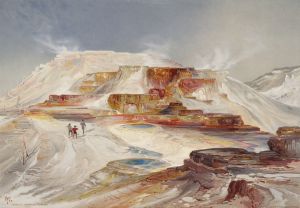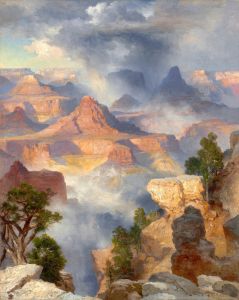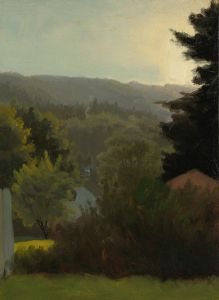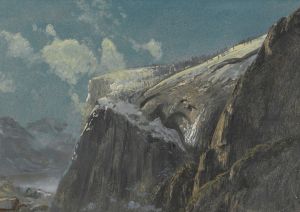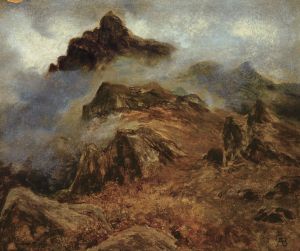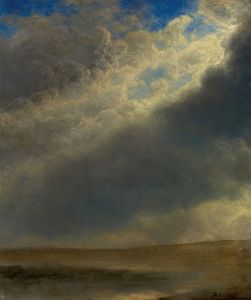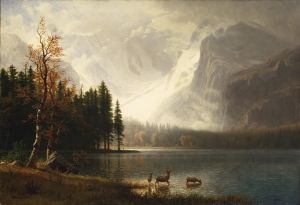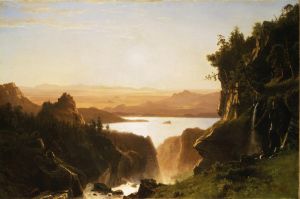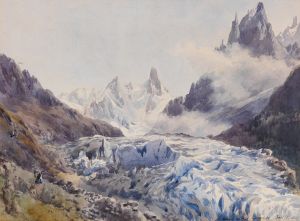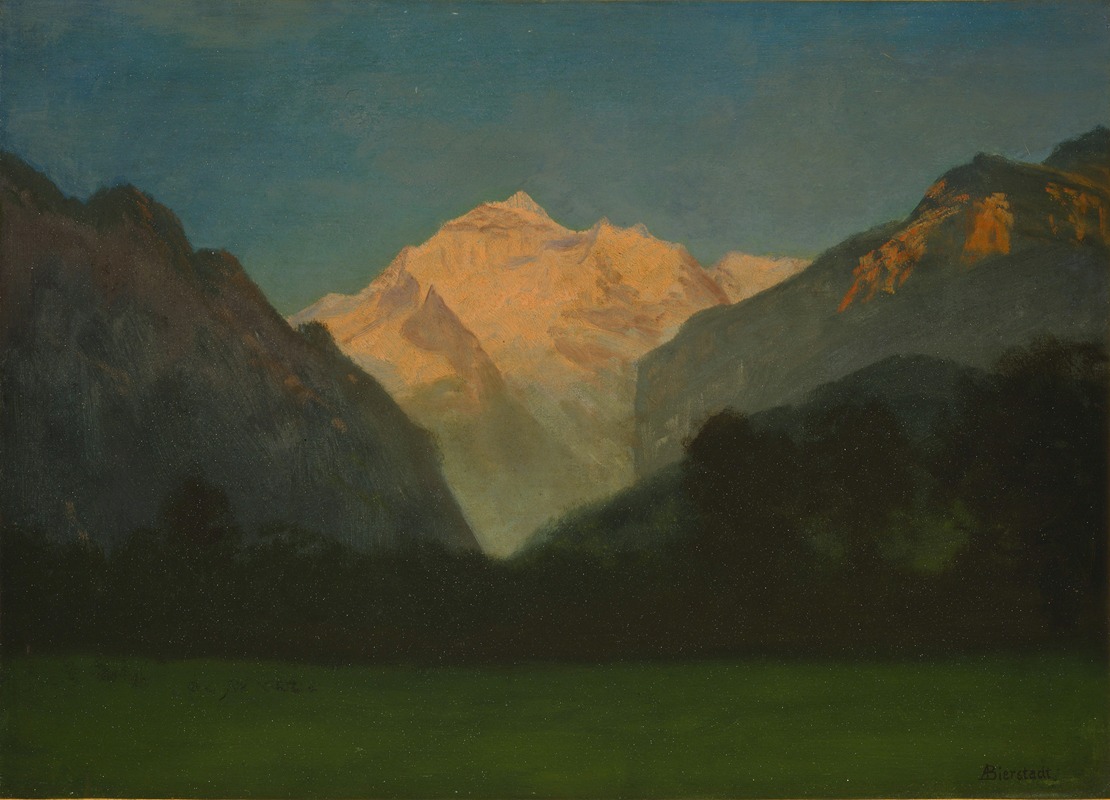
View of Glacier Park or Sunset on Peak
A hand-painted replica of Albert Bierstadt’s masterpiece View of Glacier Park or Sunset on Peak, meticulously crafted by professional artists to capture the true essence of the original. Each piece is created with museum-quality canvas and rare mineral pigments, carefully painted by experienced artists with delicate brushstrokes and rich, layered colors to perfectly recreate the texture of the original artwork. Unlike machine-printed reproductions, this hand-painted version brings the painting to life, infused with the artist’s emotions and skill in every stroke. Whether for personal collection or home decoration, it instantly elevates the artistic atmosphere of any space.
Albert Bierstadt was a German-American painter known for his grandiose landscapes of the American West. His works are characterized by their dramatic use of light and meticulous attention to detail, capturing the vastness and beauty of the American wilderness. Among his numerous paintings, "View of Glacier Park" or "Sunset on Peak" is a notable piece that exemplifies his style and thematic focus.
Bierstadt was born in Solingen, Germany, in 1830 and immigrated to the United States with his family in 1832. He grew up in New Bedford, Massachusetts, and later returned to Germany to study painting at the Düsseldorf School, which was known for its detailed and realistic style. This training significantly influenced his approach to landscape painting.
In the mid-19th century, Bierstadt joined several expeditions to the American West, which provided him with the inspiration and material for his paintings. These journeys allowed him to witness and document the untouched landscapes of the region, which were largely unknown to the American public at the time. His works played a crucial role in shaping the perception of the American West as a land of sublime beauty and boundless opportunity.
"View of Glacier Park" or "Sunset on Peak" is believed to be one of Bierstadt's many paintings that capture the majestic scenery of the Rocky Mountains. While specific details about this painting are limited, it likely features the dramatic interplay of light and shadow that Bierstadt is renowned for. His use of luminism—a technique that emphasizes the effects of light—creates a sense of depth and atmosphere, drawing viewers into the scene.
Bierstadt's paintings often depict expansive vistas with towering mountains, serene lakes, and lush forests. He had a talent for capturing the transient effects of light, such as the warm glow of a sunset or the cool hues of twilight. This ability to convey the changing moods of nature is evident in many of his works, including "View of Glacier Park" or "Sunset on Peak."
Throughout his career, Bierstadt's paintings were celebrated for their technical skill and evocative power. They were exhibited widely and attracted significant attention, contributing to the growing interest in the American West. His works also played a role in the conservation movement, as they highlighted the need to preserve these natural landscapes for future generations.
Despite his success, Bierstadt faced criticism from some contemporaries who felt that his paintings were overly romanticized and lacked authenticity. However, his ability to evoke emotion and capture the grandeur of the American landscape has ensured his lasting legacy in the art world.
Today, Bierstadt's paintings are held in high regard and are featured in major museums and collections across the United States. They continue to inspire and captivate audiences, offering a glimpse into the awe-inspiring beauty of the American wilderness as it was in the 19th century. While specific information about "View of Glacier Park" or "Sunset on Peak" may be scarce, the painting remains a testament to Bierstadt's skill and vision as an artist.






